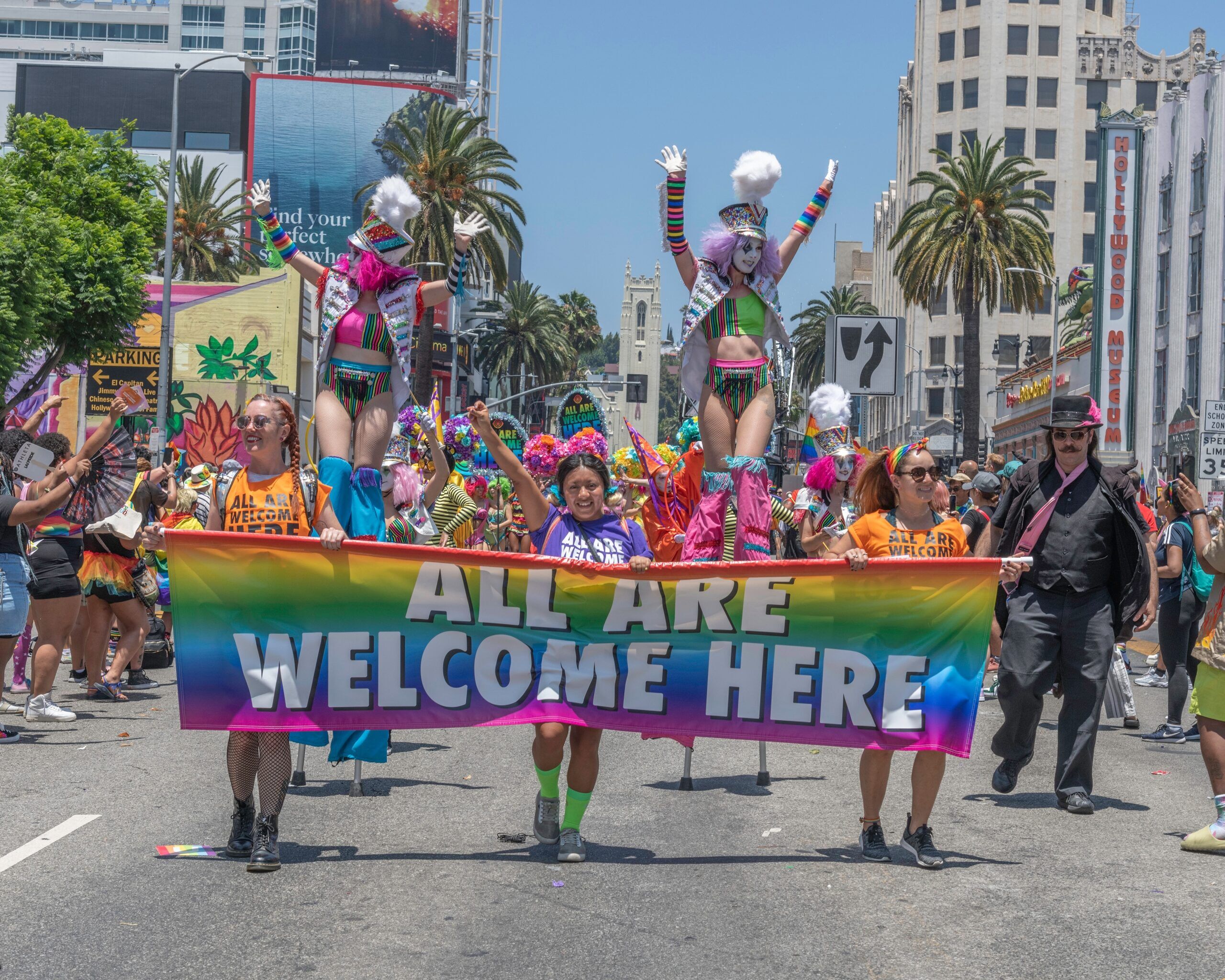
Los Angeles Pride parade Photo: Shutterstock
Surprising relics of a homophobic past have been removed in the Silver Lake neighborhood of Los Angeles.
The last remnants of street signs erected to stop gay men from cruising the area were taken down in a ceremony on Monday attended by local officials, activists and neighbors.
Related:
Traffic signs reading “No cruising”, “No U-turns”, and “Midnight to 6 am” were posted around Silver Lake in 1997 in an effort to foreclose men from hooking up in the gayborhood.
Stay connected to your community
Connect with the issues and events that impact your community at home and beyond by subscribing to our newsletter.
The signs banning travel twice through the same area over a six-hour period gave police a pretext to pull over anyone they suspected of cruising for sex.
“Los Angeles has a rich history of welcoming the LGBTQIA+ community, but there has also been real and present homophobia — which at times has been inscribed into the city’s physical spaces, as with these no-U-turn signs,” District 4 Councilmember Nithya Raman said in a prepared statement reported by the Los Angeles Times.
“I was unaware of those signs and never would have found [them],” said Pickle, West Hollywood’s inaugural drag queen laureate who performed at the removal ceremony.
The drag performer called them an “insidious” form of discrimination.
The “No Cruising” signs were the first to be removed back in 2011 with a vote from the Silver Lake Neighborhood Council.
But the “No U-turn” and “Midnight to 6 am” signs remained, until Silver Lake resident Donovan Daughtry heard a podcast on the area’s queer history. He alerted councilmembers to the irony of one of LA’s best-known gay neighborhoods — the Tom of Finland House museum teeters atop one of Silver Lake’s vertiginous hills — harboring homophobic relics of the past.
Albert LeBarron, co-owner of the area’s gay nightlife mainstay, Akbar on Sunset Boulevard, cautioned the presence of the signs was about more than undermining the free movement of gay men.
“People driving around at night with their radios playing Madonna was probably not conducive to a quiet neighborhood like Silver Lake,” LeBarron said, “and the rowdiness inside the bars sometimes spilled outside.”
That said, the cops “raided every weekend,” LeBarron added.
Taking down the signs is also dismantling stereotypes about hypersexual gay men, said Maebe A. Girl, a Silver Lake Neighborhood Council representative and the first drag queen elected to public office in the United States.
She wants Silver Lake to remain the “safe haven” that it’s always been — fighting back against the institutional discrimination that the signs represented is essential to the task.
“We are living in an era with where there are, annually, hundreds of bills being introduced discriminating against transgender people,” said Girl, who is nonbinary. “If you’re not at the table, you’re on the menu. And queer people are very much on the menu right now.”
Don’t forget to share:
Good News is your section for queer joy! Subscribe to our newsletter to get the most positive and fun stories from the site delivered to your inbox every weekend. Send us your suggestions for uplifiting and inspiring stories.

